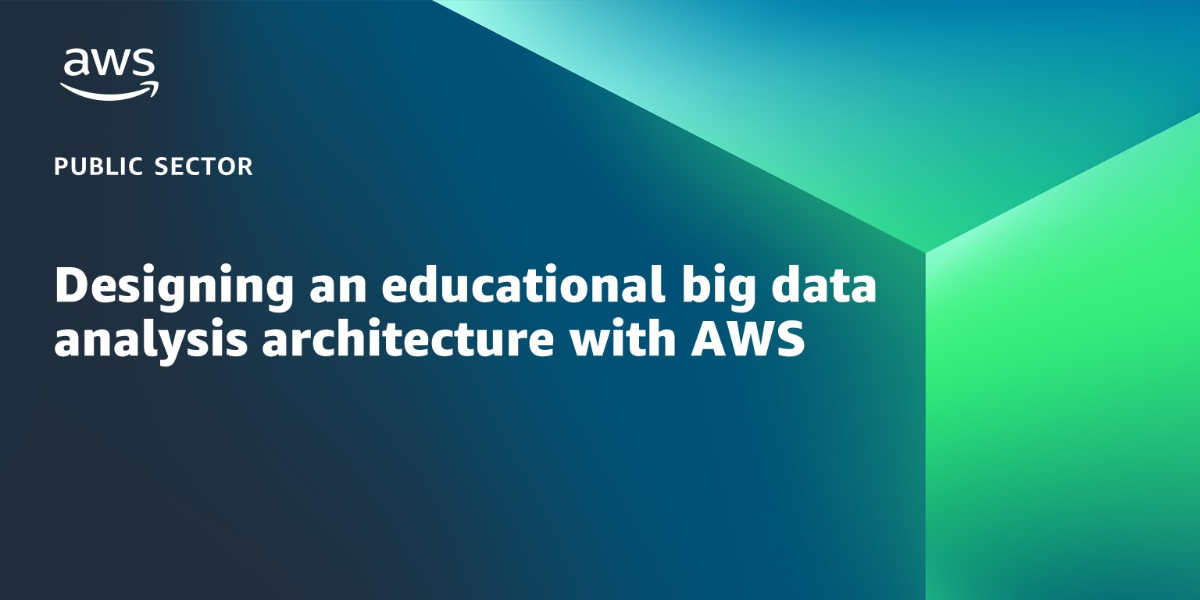AWS Public Sector Blog
Tag: architecture
Designing an educational big data analysis architecture with AWS
In this blog post, learn a high-level architecture, built on AWS, that uses a graph database to analyze unstructured and structured educational data that can, for example, help inform a recommendation to a student for the appropriate courses to take in their next semester based on multiple personalized data factors.
Now available: New AWS program supporting nonprofit donor and member engagement
As one-time donations increasingly become the norm, nonprofit development teams are challenged to think outside-the-box to attract, retain, and communicate with their valuable supporters. Nonprofit organizations can use data to inform an enhanced engagement strategy, but many are challenged to unlock the full value of that data affordably and at scale. To help nonprofits use the cloud to build innovative fundraising and member engagement solutions, we are launching a new program – AWS TechAction.
Enhance the citizen experience with deep learning-powered suggestions
Citizens want to report issues to their local governments in a fast and simple manner and not have to worry about identifying the right government agency or phone number—for instance, if a fire hydrant is broken, or a road sign has fallen over. In this blog post, learn how to set up a solution with AWS deep learning services that creates a fluid experience for reporting and addressing these issues.
How government agencies can vet external data in minutes with data interchange zones
Learn how government agencies can use AWS to build data interchange zones to automate their ability to ingest and validate data from other agencies or external entities in a secure manner. Automating this process can help agencies save time to focus on more strategic aspects of their mission.
How to improve government customer experience by building a modern serverless web application in AWS GovCloud (US)
Modern applications built using microservices architectures improve customer experience by dramatically reducing the risk of failures in a web application. In this blog post, we present a sample AWS reference architecture of a microservices application built using an architecture framework based in AWS GovCloud (US), which can help support adherence to a Federal Risk and Authorization Management Program (FedRAMP) High Baseline.
Modernize Moodle LMS with AWS serverless containers
Moodle is a popular open source learning management system (LMS). Many education institutions are deploying and running Moodle on a physical hardware or virtual machine (VM) environment. They are looking to improve the scalability of their Moodle application to simplify operations and monitoring, and also optimize operating costs. One way to approach this is to use containers technology. In this blog post, learn how to deploy and run Moodle using serverless containers technology on AWS.
Virtualizing satellite communication operations with AWS
Virtualizing the satellite ground station with cloud technology can increase scalability, flexibility, and operational agility for satellite communications (satcom) operations. This blog post describes how AWS can help satcom customers virtualize their ground stations that are directly connected to satellite antenna systems. This post details the benefits of decoupling satellite ground station hardware and software components to improve scalability and flexibility. This post also presents a reference architecture to virtualize the satcom ground segment after the satellite signal is digitized at both ends of communication.
How to implement CNAP for federal and defense customers in AWS
In July 2021, the U.S. Department of Defense (DoD) released a cloud native access point (CNAP) reference design that follows zero trust architecture (ZTA) principles and provides a new approach to access mission owner (MO) applications. The DoD’s reference design discusses four core capabilities of CNAP: authenticated and authorized entities (C1), authorized ingress (C2), authorized egress (C3), and security monitoring and compliance enforcement (C4). In this blog post, we walk through how to establish the C2 component via a virtual internet access point (vIAP) with AWS. The proposed architectures can reduce operational cost and management overhead, while improving the accessibility, resiliency, and security of mission owner applications.
Architecture framework for transforming federal customer experience and service delivery
Customer experience (CX) has emerged as a key priority in the US following the 2021 Biden Administration Executive Order (EO) to transform federal customer experience and service delivery. Application modernization enables agencies to simplify business processes and provide customers with flexible, interactive, and simple to use applications, resulting in improved CX. In this blog post, we present an AWS architecture framework that agencies can use to develop and deploy a modern application that helps improve CX.
Getting started with healthcare data lakes: Using microservices
Data lakes can help hospitals and healthcare organizations turn data into insights and maintain business continuity, while preserving patient privacy. This blog post is part of a larger series about getting started with setting up a healthcare data lake. In this blog post, I detail how the solution has evolved at a foundational level over the series to include microservices. I describe the design decisions I’ve made and the additional features used. You can access code samples for this solution through a GitHub repo for reference.









